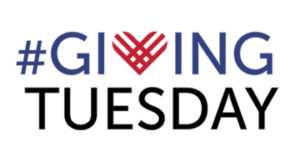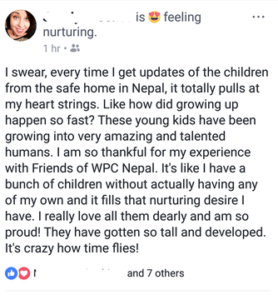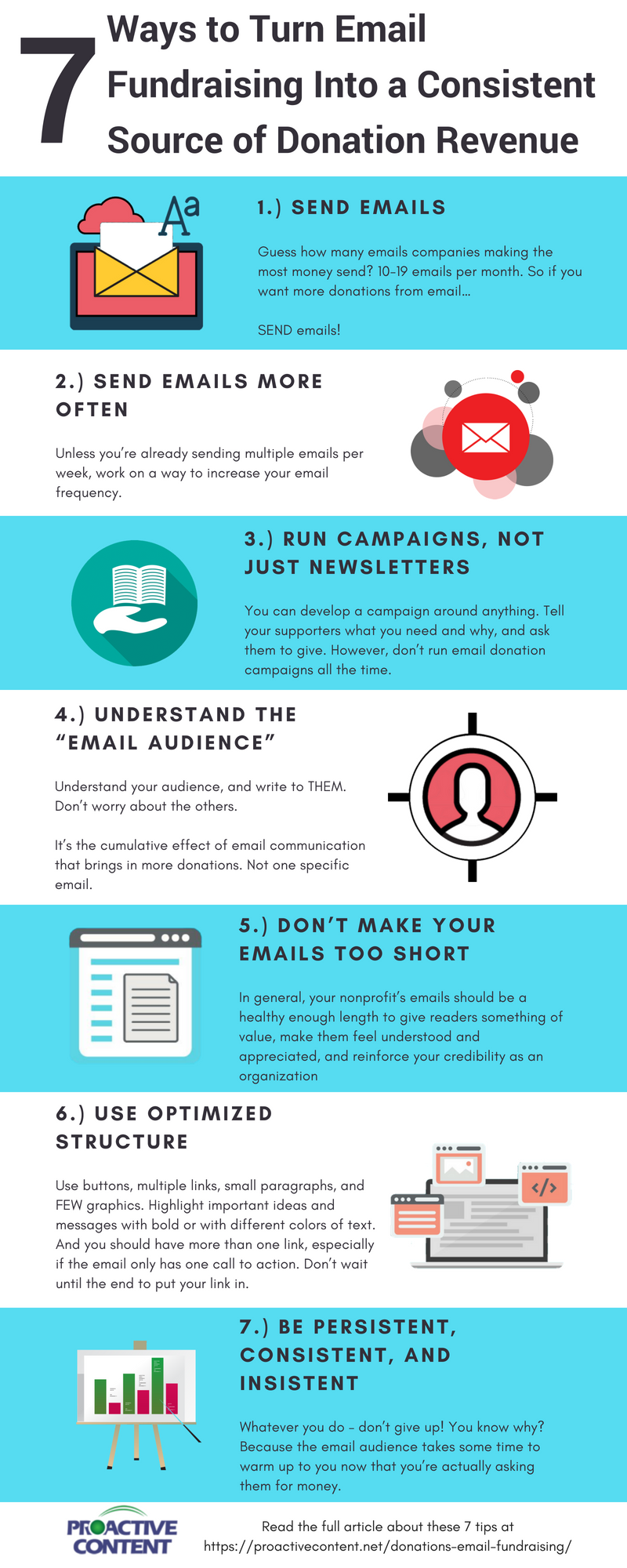This Is Why Your Nonprofit Isn’t Getting More Donations from Email
 7 Easy Tactics to Ride the Wave of Email Fundraising Growth Other Nonprofits Are Already Surfing
7 Easy Tactics to Ride the Wave of Email Fundraising Growth Other Nonprofits Are Already Surfing
I love email.
It’s true. I still look forward to getting messages in my email that are only for me. I love updates, notes from clients, messages from family and friends, and clear directions for stuff I’m doing.
Now, my wife would say, “Then why do you have 800 unread messages, and that’s just in your main inbox?”
To which I would reply, “Just because I don’t read them all doesn’t mean I don’t want to get them.”
That, my dear nonprofit friend, is the mind shift some organizations still need to make regarding email. Some worry too much about open and click rates. Others worry about people unsubscribing. They’re all missing the point.
A great number of your most passionate subscribers don’t open everything you send. But they still want you to send it to them. More importantly, it keeps you in their mind and assures them you’re still actively working to achieve your mission – which is what they really care about.
So, I love email. And I hate texting. I don’t have a smartphone. I have sent fewer than five texts my entire life. I recognize the advantages texting seems to offer, but I’m fine without it, and email offers many more.
Nonprofit Tech for Good seems to agree with me. This article reveals that 56% of emails are opened on smartphones, and that reading emails is the #1 activity people do on their phones. And you thought they were texting…
Donations from email grew by 25% in 2015, which was 6% higher than the overall online fundraising growth.
 Their main point is that email far outperforms social media when it comes to truly connecting with people. Social media is mass communication. It’s like in Jaws when they dump raw meat into the ocean, hoping to catch a shark. Very inefficient. But email is personal. Like a thousand fishing poles. One for each fish.
Their main point is that email far outperforms social media when it comes to truly connecting with people. Social media is mass communication. It’s like in Jaws when they dump raw meat into the ocean, hoping to catch a shark. Very inefficient. But email is personal. Like a thousand fishing poles. One for each fish.
As I said at the outset, a well-written email feels like it was sent only to you. Social media can’t touch that. I’m not saying don’t use social media. Far from it. Only that if you want more donations, email is still the top place to invest when it comes to online fundraising.
So – what can you do to get more donations from email?
7 Ways to Turn Email Fundraising Into a Consistent Source of Donation Revenue
-
Send Emails
Duh, right? But hold on a minute. How many emails do you send per month? 60% of companies send just one or two per month. Read this post about how many you SHOULD be sending, and why you shouldn’t care about unsubscribes.
Guess how many emails the companies making the most money send.
10-19 emails per month. Now, that’s companies, not nonprofits. But it doesn’t matter. The principle is the same.
And, many nonprofits don’t even send one per month. Some only send a couple per year. And, they’re getting almost zero donations from email.
But hey, at least no one’s unsubscribing…
One nonprofit I work with sent maybe four emails in 2014. In 2017, they sent over 30. Four years ago, they made $0 in donations from email. Last year, they made over $10,000.
So if you want more donations from email…
SEND emails!
-
Send Emails More Often
The first tactic is meant to motivate you to commit to an email plan. Even if it’s just once per month. If you’ve never been consistent about it, then the first step is to get consistent. Then, you have something to build on.
But the ultimate goal is, as your list grows and your supporters start to respond, to increase your email frequency. There’s no magic number, though 10-19 per month has produced the best results in the business world. But for smaller nonprofits, 10-19 is impractical for many reasons. So this part depends on a number of factors.
But whatever you’re doing now (unless you’re already sending multiple emails per week), work on a way to increase your email frequency.
-
Run Campaigns, Not Just General Newsletters
Newsletters are important, and you should have one. It might be monthly, bimonthly, or weekly. But for real email donation growth, plan and run a few email fundraising campaigns each year.
 These might be Giving Tuesday or year-end campaigns (both of which ProActive Content has created for several nonprofits with great success).
These might be Giving Tuesday or year-end campaigns (both of which ProActive Content has created for several nonprofits with great success).
You can also find local fundraising opportunities in your area and get on board with those. Where I live, for instance, the newspaper runs an annual fundraiser. Get involved in things like that, and run an email campaign to get your supporters involved.
You can develop a campaign around anything:
- Immediate needs that come up
- Ongoing needs that are persistently underfunded
- Growth-plans you have been wanting to pursue but lack the funds
- An event you want people to participate in
- Getting more volunteers
Tell your supporters what you need and why, and ask them to give.
However, don’t run email donation campaigns all the time. You should not be asking for donations in every email you send. You can put a donate button on every email, but don’t make the goal of every email to raise money. That gets tiresome, and it makes you seem like you’re always in need, that nothing good is happening, and that you don’t really care about your donors or readers. And that leads to #4.
-
Understand the “Email Audience”
I am part of the email audience. Other people hate email. I know of supporters of charities who have canceled their email subscriptions, but who keep giving in other ways. They prefer other means of communication. That’s why you need to use multiple forms of media. Different people respond to different media.
So what is the “email audience” like?
We like to know what’s happening.
We like being able to go back to messages later when we have more time.
We like doing all our business in one place that’s still relatively free of distractions (unlike social media).
We don’t get all worked up about having to delete emails we don’t want to read.
We aren’t offended that people want to market to us over email. We get it. And we’ll just delete them if we aren’t interested.
We prefer not to live in the ‘instant everything’ world. If you do an event and ask us why we didn’t come to it, even though you told everyone about it on Facebook Events, we’ll say, “What event?”
We have 389 unread notifications on Facebook, and we don’t think anything of it.
We like folders, even if we never look at the emails we move into them.
Case in point. When the FOSTA/SESTA bill was passed (this is the bill that finally ran backpage.com out of town for facilitating sex trafficking while feigning innocence), I got to hear the news from several nonprofits whose lists I’m on.
I knew about the struggle, the uncertainty, and the challenges to getting this bill passed. And I felt the victory along with them when they succeeded.
I did all this from email.
The point is, if those nonprofits weren’t communicating with me, I wouldn’t know they were doing anything about sex trafficking. This is why I subscribe. Because this is an issue I care about. And when I choose to give to nonprofits who are fighting sex trafficking, who do you think I’ll give to?
There is no magic formula for email.
It’s not like there’s a magic formula for that one specific “fundraising email” that will compel thousands to donate. It’s mission alignment. I’m aligned with them. When I want to give, I’ll give to them. That’s why you don’t need to track the data from every single email.
ProActive Content Principle: It’s the cumulative effect of email communication that brings in more donations. Not one specific email.
This is why you don’t need to worry about unsubscribes. Those people either just don’t like email, or they aren’t really aligned with your mission and would therefore never give to it anyway.
Understand your audience, and write to THEM. Don’t worry about the others.
-
Don’t Make Your Emails Too Short
I’ve been asked so many times, “Are you sure this isn’t too long?”
This worry comes from the “no one reads long articles” delusion. Guess what – most of the top-selling fiction books today are in the teen category. The teenagers are still reading! You know, those tech-obsessed social media addicted young people who, we’re told, can’t read more than two sentences without needing to distract themselves? The truth? They’re reading books.
Think again about the email audience. We don’t care if an email is long. We may or may not read the whole thing. But we like having the option.
What’s too long? A better question is, what’s too short?
 What can you possibly say in two sentences that’s going to inform and resonate with your audience? Now – there are exceptions to this. Sometimes super short emails have a purpose. But usually, this is for a more segmented mailing.
What can you possibly say in two sentences that’s going to inform and resonate with your audience? Now – there are exceptions to this. Sometimes super short emails have a purpose. But usually, this is for a more segmented mailing.
But in general, your nonprofit’s emails should be a healthy enough length to accomplish three things:
- Give your readers something of value – what they care about
- Make your reader feel understood and appreciated
- Reinforce your credibility as an organization (the one thing all true spam has in common: super short emails. Reputable organizations should write longer emails for the simple fact that spammers are too dumb to know how to write them.)
How long? Rarely do I write an email that’s under 200 words. More typical is 400-600. 700 is pushing it, though for newsletters with multiple sections, above 700 is fine.
-
Use Optimized Structure
Use buttons, multiple links, small paragraphs, and FEW graphics.
Remember – emails need to feel like personal letters. Flashy graphics, backgrounds, and ‘marketing’ colors are by their very nature impersonal. The more your letter feels like it was written by high-paid marketing graduates, the less engaging it will be.
 But it needs to be easy to engage with. You should have text links AND button links, for instance. Why? Because buttons are easier to see and more likely to be clicked on. But some programs don’t show buttons if images are disabled, so if you only use buttons, it might be invisible to some readers.
But it needs to be easy to engage with. You should have text links AND button links, for instance. Why? Because buttons are easier to see and more likely to be clicked on. But some programs don’t show buttons if images are disabled, so if you only use buttons, it might be invisible to some readers.
And you should have more than one link, especially if the email only has one call to action. Don’t wait until the end to put your link in. Some people won’t get that far.
Highlight important ideas and messages with bold or with different colors of text.
-
Be Persistent, Consistent, and Insistent
Whatever you do – don’t give up!
If you create an email donation campaign, and it raises hardly anything, don’t quit. You know why? Because the email audience takes some time to warm up to you now that you’re actually asking them for money. (Come to think of it, so does the direct mail audience…)
Fundraising is always about trust before mission. Read more about how to build trust with donors.
Keep feeding them valuable content that matters to them.
Keep giving updates, reports, and impact statements.
Keep telling stories about the people or animals or the cause you’re serving.
Keep sending surveys and quizzes, and insist that they fill them out.
Keep inviting them to stuff.
And yes, keep asking them to give.
Keep doing all this, and over time, they will.
Who’s Going to Write Your Emails?
 Get help from a fundraising copywriter who understands the email and donor audience.
Get help from a fundraising copywriter who understands the email and donor audience.
The Facebook post to the right comes from one supporter of a nonprofit for whom I write their emails. This is the feeling of emotional connection good email copywriting produces.
ProActive Content produces superb writing, knows how to tell stories, understands email and digital (and direct mail) marketing and fundraising, and knows how to integrate your emails with the other components of your website.
We can help develop campaigns from scratch, or just implement the ones you’ve already planned.
But to make your email campaigns and newsletters work, and to do them consistently, you need a writer and an implementer who can align with your mission.


